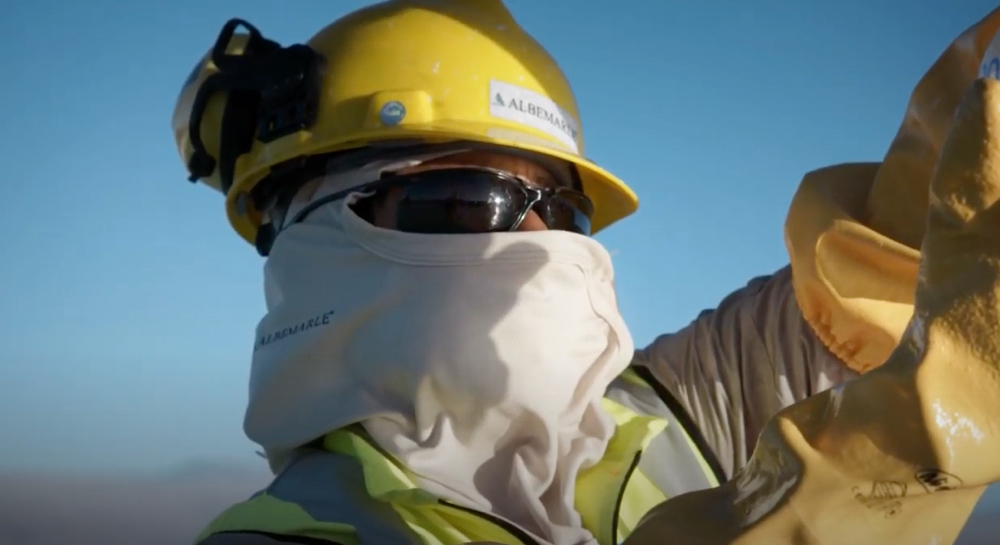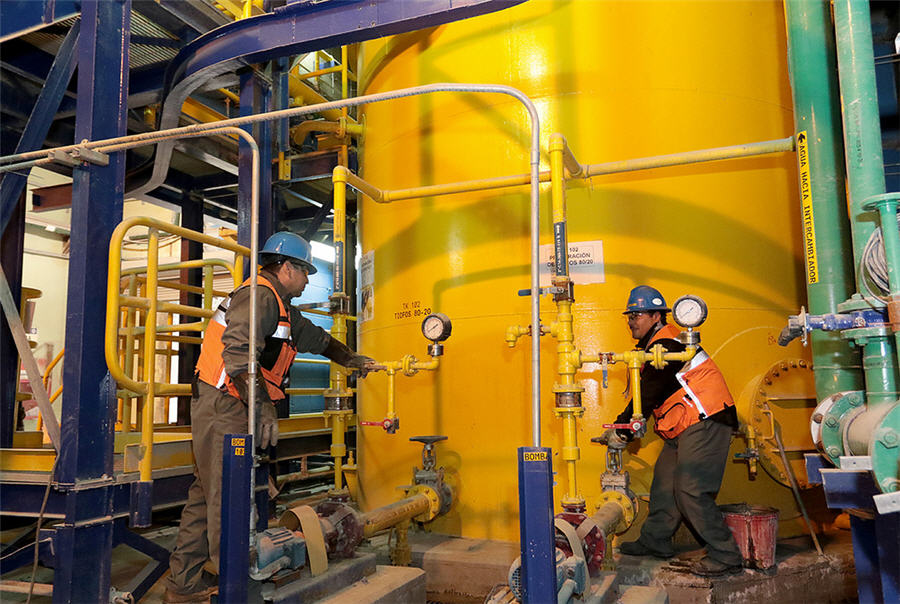Column: Albemarle looks to shed more light on lithium pricing

Albemarle, the world’s largest producer of lithium, has announced it will conduct a series of auctions for its products on the Metalshub digital trading platform.
The first “bidding event” will be for 10,000 metric tons of spodumene ore and is scheduled for March 26.
The aim, according to Albemarle’s notice to customers, is to “explore price discovery while ensuring a fair and transparent process for all customers”.
The key word in that sentence is “transparent”. The entire lithium supply chain has been rocked by the collapse in prices over the last year.
But just how reliable an indicator are those prices? Albemarle’s decision to conduct a series of online auctions suggests it thinks the lithium industry could do better.
Fractured pricing
The explosive growth of the electric vehicle battery market has transformed lithium from a specialty niche product to mainstream industrial material in the space of just 10 years or so.
Lithium pricing hasn’t yet evolved to match the scale of that transformation.
Albemarle, like most established producers, has historically sold most of its lithium on fixed-term contracts directly negotiated with buyers.
That, however, only partly insulates it from the volatile spot price, which is primarily determined in China, the world’s largest converter of lithium raw materials into battery-grade material.
China’s first futures price came in the form of the Wuxi Stainless Steel Exchange, which launched a lithium carbonate contract in July 2021.
Wuxi immediately had an outsize influence on global pricing, although it was a problematic benchmark, based on spot physical trading of non-battery grade carbonate among a limited number of Chinese players. The relationship between Wuxi futures pricing and lithium reality was at best unclear.
Wuxi’s influence on Chinese and international prices has waned after the July 2023 launch of a lithium carbonate contract by the Guangzhou Futures Exchange (GFEX).
GFEX, though, has turned out to be just as wild a price indicator as Wuxi. A wave of speculative enthusiasm saw volumes on the new contract almost double between October and November with the exchange forced to hike margins, opens new tab and expand trading limits to cope with the volatility.
That hasn’t stopped GFEX from rapidly becoming the accepted reference point for lithium pricing, even though non-Chinese entities will struggle to access it.
Western companies looking for price management tools are currently limited to the CME’s lithium hydroxide contract, which has built up impressive momentum but remains small relative to its Chinese peer. CME open interest at the end of February was 22,275 metric tons, compared with 321,329 on the GFEX.
The London Metal Exchange’s lithium contract has failed to trade at all, while that listed with the Singapore Exchange traded just 18 lots last year and has notched up volumes of only 30 lots so far this year.
All Western futures contracts are settled against price assessments from Fastmarkets, which like fellow price reporting agency Benchmark Mineral Intelligence publishes an array of assessments intended to capture the complexity of the lithium supply chain.
A third way?
It’s not difficult to see why Albemarle is looking to find a third way between the wild eastern Chinese carbonate market and a Western hydroxide futures offering which rests on third-party price assessments.
Ironically, the only other hard pricing reference point looks set to disappear.
Pilbara Minerals has held regular auctions for its spodumene via the Battery Metals Exchange, generating a degree of price transparency at the upstream end of the production chain.
However, Australia’s largest independent miner has said it now has little uncommitted material left to sell, meaning future spot sales are “unlikely”.
Albemarle’s spodumene auction later this month will help fill the pricing gap, but it seems highly likely that more tenders of lithium in other forms will follow.
If there are enough of them, it may be possible for Metalshub to generate a price index based on the physical peer-to-peer transactions on its site.
Metalshub has built its trading platform around steel alloys such as manganese and chrome.
As with lithium, such metals tend not to come in standardised form and have historically not been exchange-traded but rather assessed by the likes of Fastmarkets.
Metalshub has changed that dynamic and is now working with the LME to open up a forum for the trading of low-carbon nickel with the ultimate goal of producing a transaction-based “green” nickel index, opens new tab to complement the LME’s standard Class I contract.
Such digitalization of markets “is becoming more relevant and Albemarle supports this development”, the company said in its alert to customers about the upcoming “bidding event”.
Desperately seeking stability
Global lithium mine production has mushroomed from 25,000 tons in 2010 to 180,000 tons last year, according to the United States Geological Survey.
The world needs a lot more of the stuff if it’s going to move away from the internal combustion engine to reduce global emissions.
But producers’ ability to finance and build new capacity has been undermined by a boom-bust pricing loop, with last year’s collapse being the latest downturn of the cycle.
To some extent this reflects the problems of aligning production with demand in a fast-evolving market. But the lack of a transparent benchmark price and limited ability to hedge price risk is not helping.
The lithium supply chain is maturing but the metal’s pricing seems trapped at the early development stage.
Albemarle should be credited for trying to change that problematic price paradox.
(The opinions expressed here are those of the author, Andy Home, a columnist for Reuters.)
(Editing by Paul Simao)
{{ commodity.name }}
{{ post.title }}
{{ post.date }}

Comments